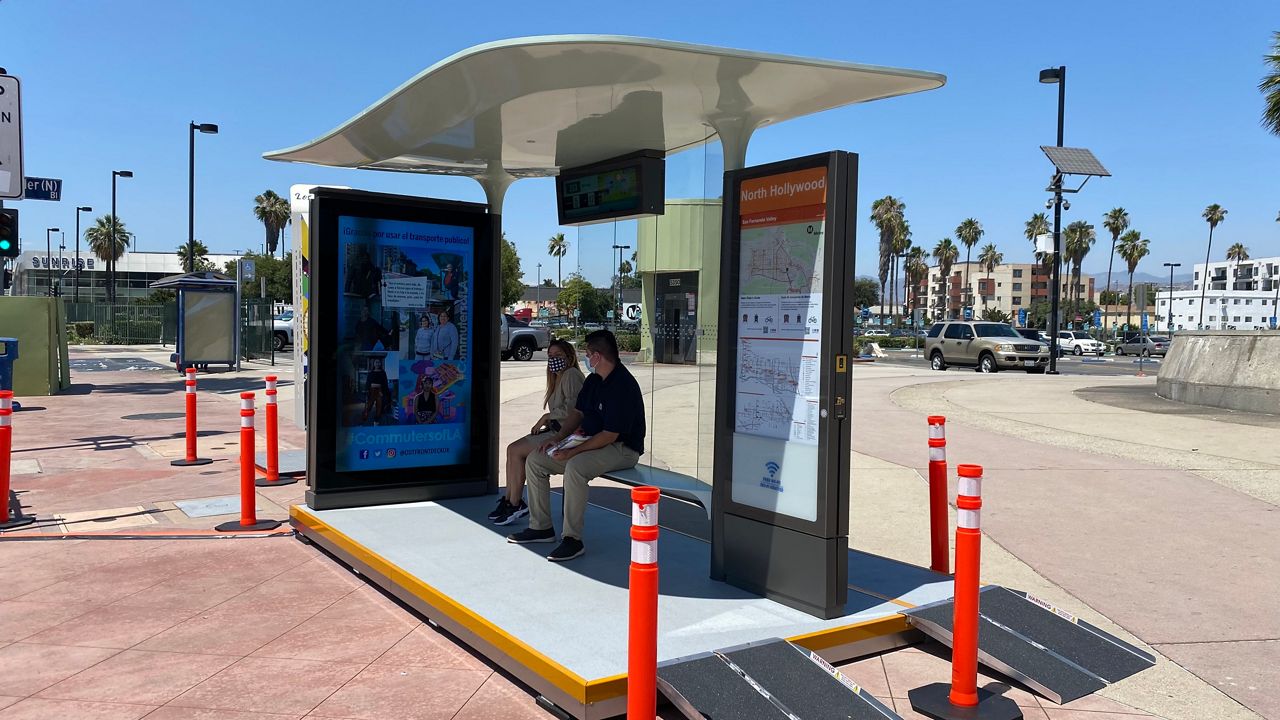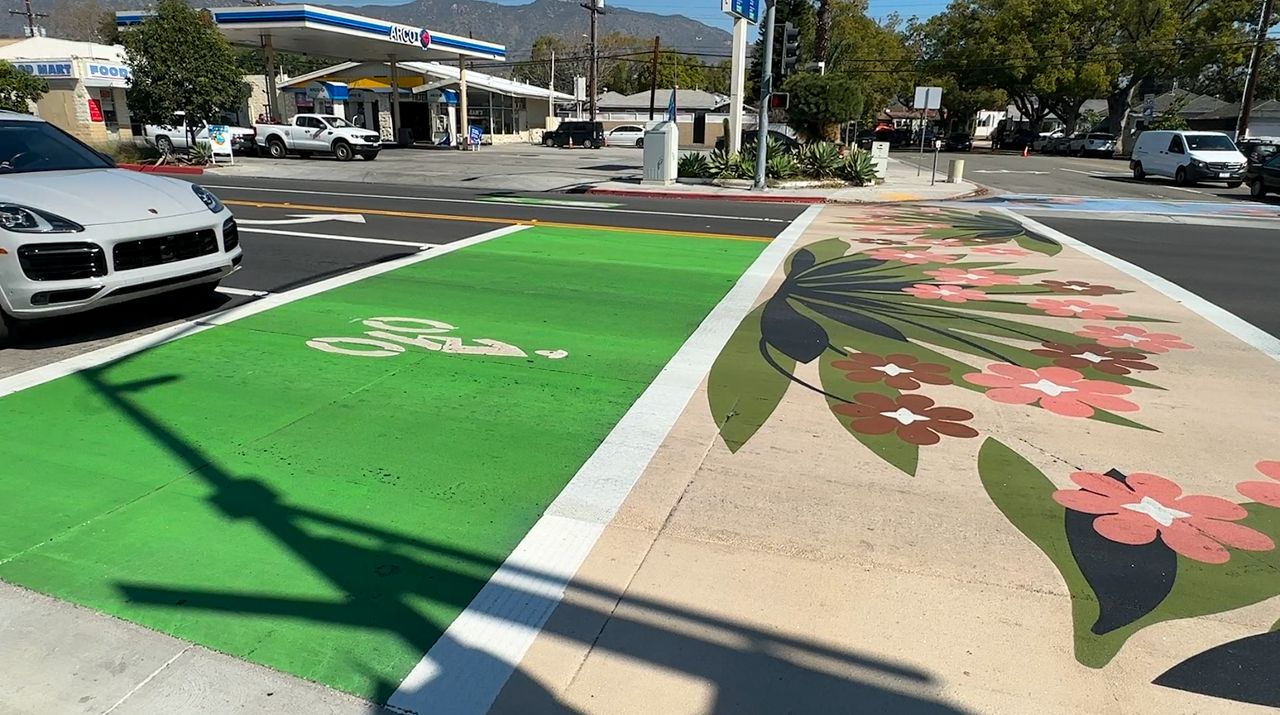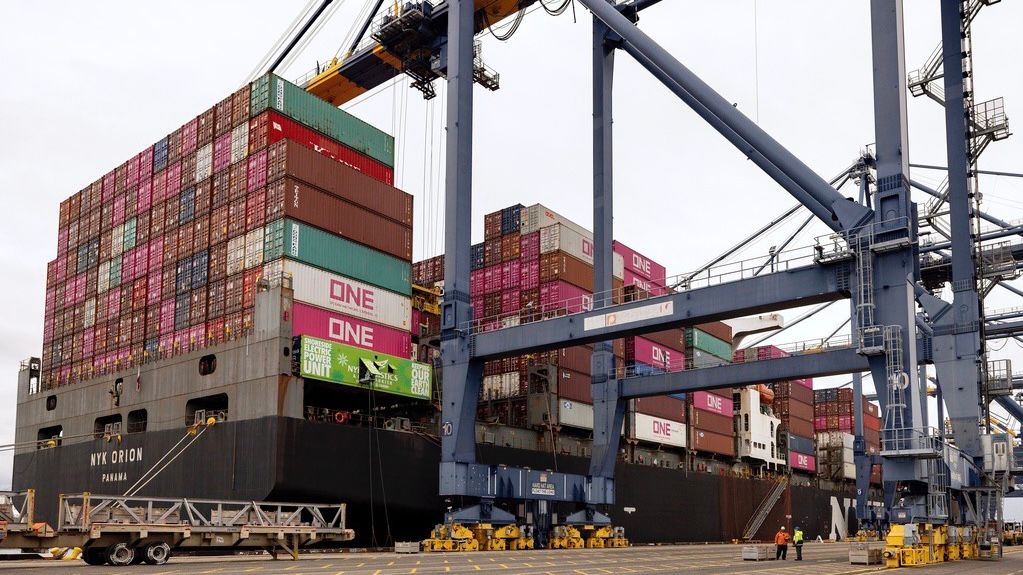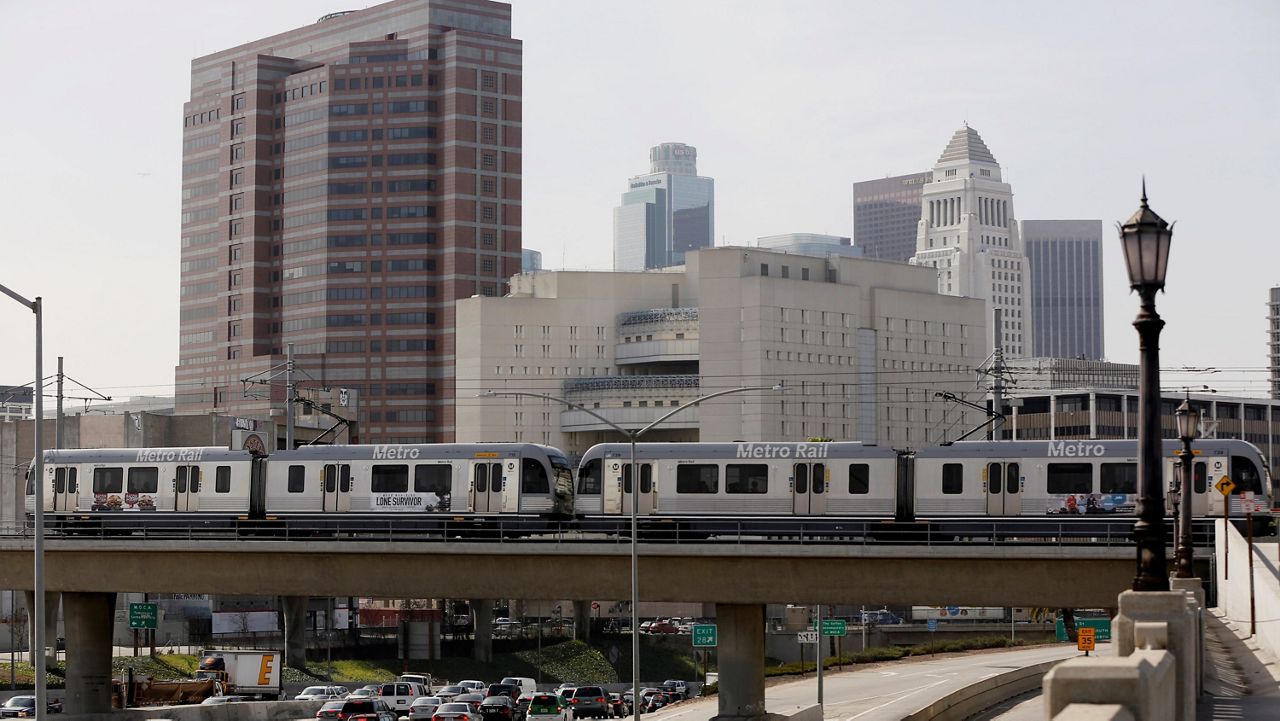The Los Angeles bus stops that are lucky enough to have a shelter haven’t changed much in 20 years. They’re simple structures that provide respite from the elements, a place to sit while people wait for their rides and a platform for advertisers. But the humble bus stops are about to go high-tech.
This week, StreetsLA is showing some potential new designs that incorporate real-time travel information, giant interactive screens that work like iPads, cell phone chargers, hand sanitizers, scooter kiosks and other amenities it will begin to roll out next year at 3,000 bus stops around the city.
“Twenty years ago, you would hang a poster in a transit shelter in a lit box, but so many things have changed,” said Greg Spotts, assistant director and chief sustainability officer for StreetsLA, the city agency that is overseeing the program. “We thought it would be great to see what kind of innovation could be brought forward.”
Twenty years ago, when the city started using the shelter design that is now commonplace, cell phones were just beginning to go mainstream. Interactive screens and electric scooters had yet to be invented. And bus schedules were printed pamphlets that rarely reflected reality.
Today, almost everyone has a smartphone and life, as a whole, has largely gone digital. So, StreetsLA is adapting.
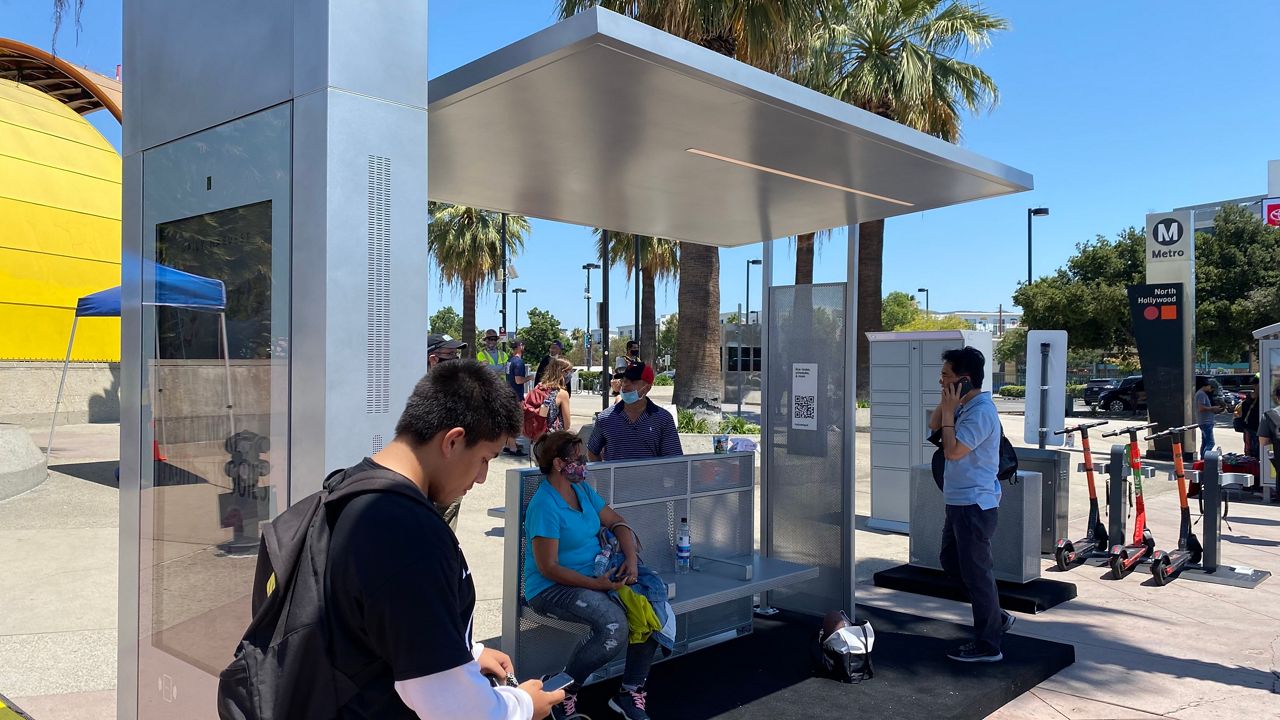
“The way we’re looking at this is that today’s bus stops are tomorrow’s mobility hubs,” said Gene Oh, chief executive officer of the Bay Area smart mobility startup, Tranzito. One of two companies StreetsLA is considering to redesign its bus shelters when the current contract expires later this year, Tranzito currently operates the bike share and bike parking programs for the LA County Metropolitan Transportation Authority.
“A location that’s currently used for a bus stop can be used for all forms of mobility, whether it’s micro mobility like scooters, Uber and Lyft pooled rides that want to use a curb space for two minutes or package delivery,” Oh said.
Tranzito’s design incorporates all of those ideas into its proposed design. In addition to the bus shelter itself, which includes a screen with real-time bus arrival information, wireless phone charging and shaded seating, there are adjacent structures.
A scooter dock not only provides parking to keep the devices out of pedestrians' right of way but recharging so they can stay in operation. There’s also a digital locker that can be accessed with a cellphone-based TAP card to receive packages — similar to a post office box, only shared.
Having these sorts of ancillary systems offers other potential benefits to the city, including reduced traffic and emissions.
“Let’s say a package delivery company uses the locker to drop off half a dozen packages,” Oh said. “That means they’re not stopping half a dozen other places to drop off packages and double parking for two to five minutes at a time.”
There are currently 1,900 bus stops in the city with shelters and another 6,000 that only have bus benches. StreetsLA plans to add another 1,100 shelters to its Sidewalk and Transit Amenities Program when it awards the new contract next year.
“The goal is to get shelters into communities that haven't previously had them,” Spotts said. “We need to make sure bus shelters are in all the places where people live and work. That’s critically important as the city gets hotter and shade becomes more important.”
The way bus shelters have typically been sited is based on their advertising potential, which is why there are more bus shelters in areas that advertisers deem valuable and fewer in low-income neighborhoods, even if bus ridership there is higher. The city currently makes about $6 million in advertising revenue from its shelters — a system it has used since the advertising company JCDecaux first proposed the idea of financing bus shelters with advertising and won the city’s contract 20 years ago.
The city had considered automatically extending its relationship with JCDecaux, but the LA City Council and the Board of Public Works decided to instead open it up for bids. JCDecaux is now competing with Tranzito — the final two candidates of four the city had been considering.
Like Tranzito, the JCDecaux design includes real-time transit information, cell phone charging and shaded seating, but it also includes free WiFi, a transit map, a large interactive kiosk that works similar to an iPad and a hand sanitizer station.
Separately, there is something called a sunshade blade that Nion himself designed. A tall vertical blade roughly two feet wide, it can be spun around into whatever position best provides shade, depending on the time of day. Early in the morning or late in the afternoon, a single blade can cast a shadow that shades as many as five people.
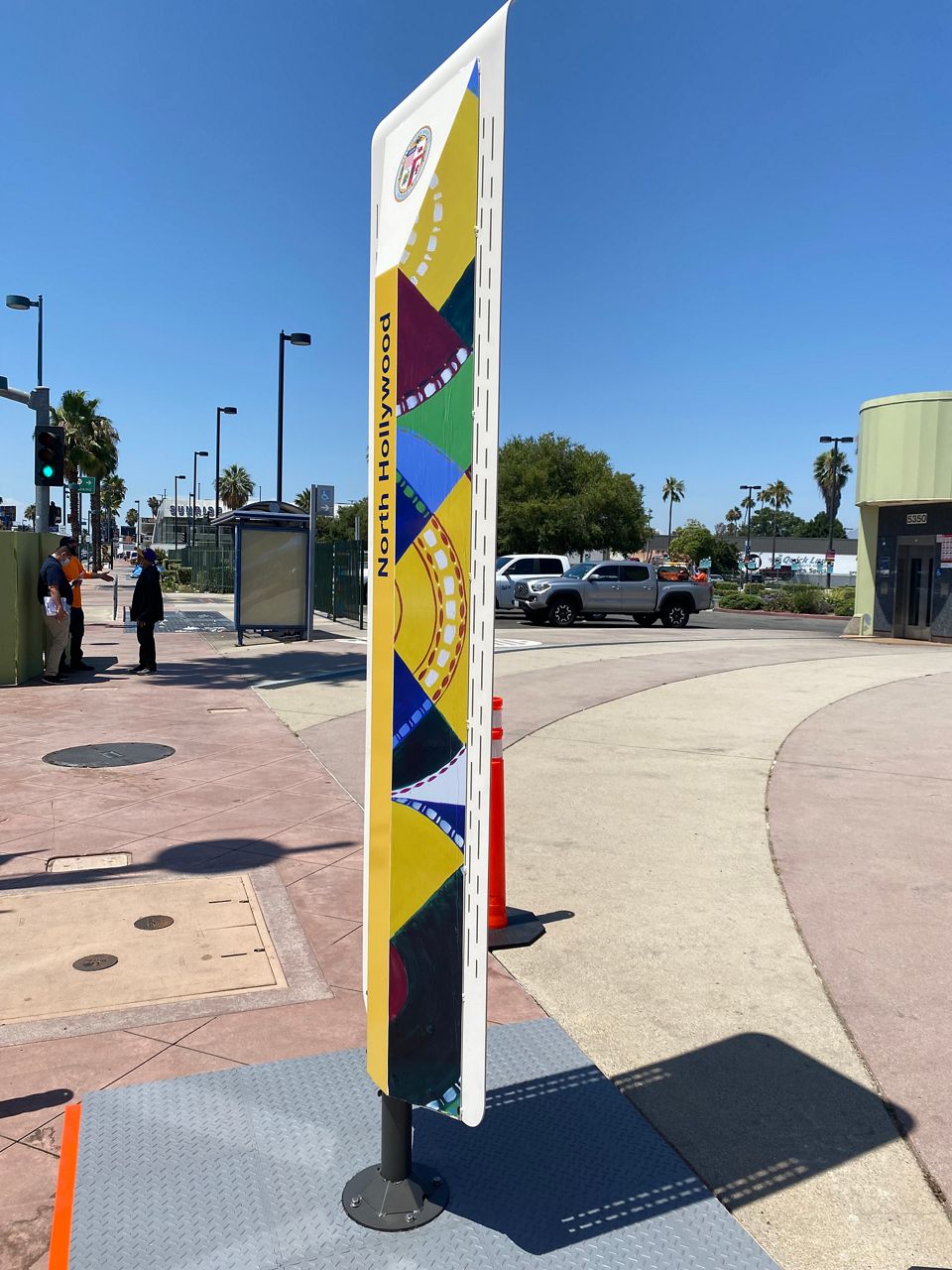
Designing the sunshade blade, Nion said, “We saw people all the time trying to stand in the shade of a streetlight pole. But the streetlight pole is not always on the right side that you need the shade, and the poles are too skinny, so the shade is too narrow and doesn’t cover your body.”
The JCDecaux and Tranzito bus shelter designs are currently touring bus stops around the city, where working models have been temporarily installed to show how they function in real life. The Sidewalk and Transit Amenities Program demonstrations will run through July 30, making stops at City Hall in downtown LA (July 21-22), Reseda (July 23-24), West LA (July 25-26), South LA (July 27-28) and San Pedro (July 29-30).






